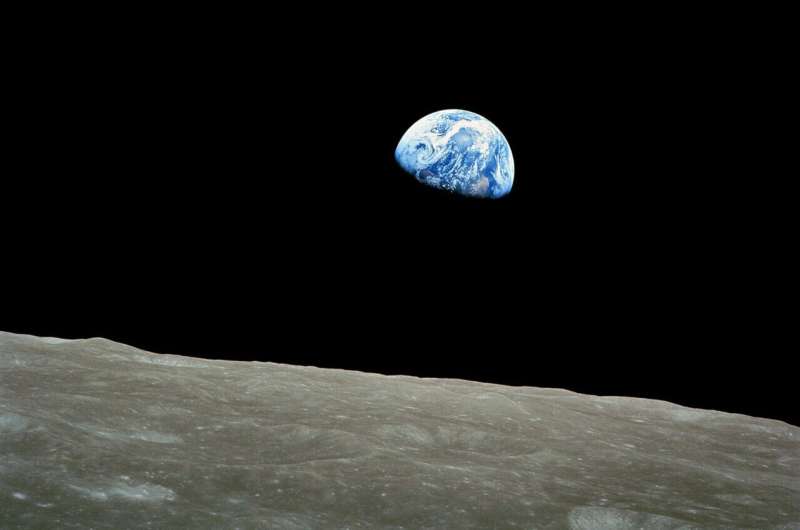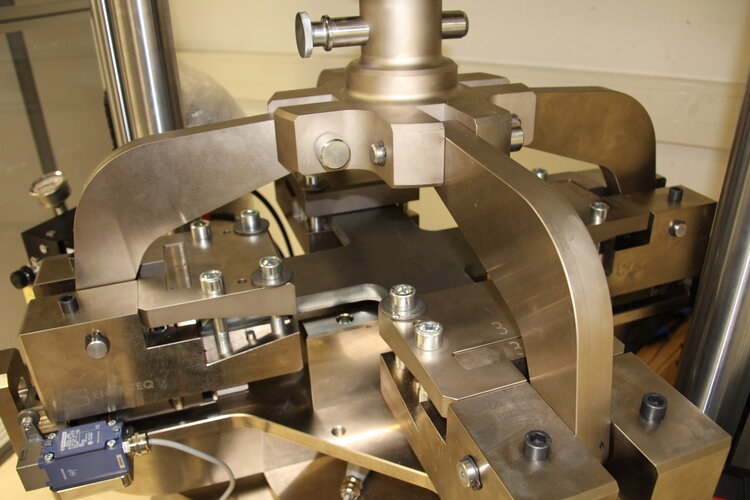
Copernical Team
LCO discovers activity on largest comet ever found
 A newly discovered visitor to the outer edges of our Solar System has been shown to be the largest known comet ever, thanks to the rapid response telescopes of Las Cumbres Observatory. The object, which is named Comet C/2014 UN271 Bernardinelli-Bernstein after its two discoverers, was first announced on Saturday, June 19th, 2021.
C/2014 UN271 was found by reprocessing four years of data fr
A newly discovered visitor to the outer edges of our Solar System has been shown to be the largest known comet ever, thanks to the rapid response telescopes of Las Cumbres Observatory. The object, which is named Comet C/2014 UN271 Bernardinelli-Bernstein after its two discoverers, was first announced on Saturday, June 19th, 2021.
C/2014 UN271 was found by reprocessing four years of data fr Operations underway to restore payload computer on Hubble Space Telescope
 NASA has identified the possible cause of the payload computer problem that suspended Hubble Space Telescope science operations on June 13. The telescope itself and science instruments remain healthy and in a safe configuration.
The payload computer resides in the Science Instrument Command and Data Handling (SI C&DH) unit. It controls, coordinates, and monitors Hubble's science instrument
NASA has identified the possible cause of the payload computer problem that suspended Hubble Space Telescope science operations on June 13. The telescope itself and science instruments remain healthy and in a safe configuration.
The payload computer resides in the Science Instrument Command and Data Handling (SI C&DH) unit. It controls, coordinates, and monitors Hubble's science instrument Physicists describe Sun's electric field
 As the Parker Solar Probe ventures closer to the sun, we are learning new things about our home star.
In a new study, physicists led by the University of Iowa report the first definitive measurements of the sun's electric field, and how the electric field interacts with the solar wind, the fast-flowing current of charged particles that can affect activities on Earth, from satellites to tel
As the Parker Solar Probe ventures closer to the sun, we are learning new things about our home star.
In a new study, physicists led by the University of Iowa report the first definitive measurements of the sun's electric field, and how the electric field interacts with the solar wind, the fast-flowing current of charged particles that can affect activities on Earth, from satellites to tel Stellar Project announces LaserCube maiden flight mission
 LaserCube, Stellar Project's frst optical communication terminal for small satellites, has been launched into space onboard D-Orbit's ION Satellite Carrier in SpaceX's Falcon 9 Transporter-2 mission. Now, the company is ready to test the payload in orbit.
Padua - Stellar Project space technology startup, launches LaserCube Maiden Flight. The payload hosted on D-Orbit's ION Carrier has lift
LaserCube, Stellar Project's frst optical communication terminal for small satellites, has been launched into space onboard D-Orbit's ION Satellite Carrier in SpaceX's Falcon 9 Transporter-2 mission. Now, the company is ready to test the payload in orbit.
Padua - Stellar Project space technology startup, launches LaserCube Maiden Flight. The payload hosted on D-Orbit's ION Carrier has lift ESA contracts Arianegroup to make a more versatile Ariane 6
 The European Space Agency (ESA), as part of its Ariane 6 Competitiveness Improvement Program, has chosen ArianeGroup to develop and build a complementary stage (kick-stage) for Ariane 6, called ASTRIS, which will enable Arianespace, operator of the new European launcher, to place with even greater efficiency a larger number of payloads in different orbits, or to inject satellites into geostation
The European Space Agency (ESA), as part of its Ariane 6 Competitiveness Improvement Program, has chosen ArianeGroup to develop and build a complementary stage (kick-stage) for Ariane 6, called ASTRIS, which will enable Arianespace, operator of the new European launcher, to place with even greater efficiency a larger number of payloads in different orbits, or to inject satellites into geostation Ride with Juno as it flies past Jupiter and Ganymede
 On June 7, 2021, NASA's Juno spacecraft flew closer to Jupiter's ice-encrusted moon Ganymede than any spacecraft in more than two decades. Less than a day later, Juno made its 34th flyby of Jupiter, racing over its roiling atmosphere from pole to pole in less than three hours. Using the spacecraft's JunoCam imager, the mission team has put together this animation to provide a "starship captain"
On June 7, 2021, NASA's Juno spacecraft flew closer to Jupiter's ice-encrusted moon Ganymede than any spacecraft in more than two decades. Less than a day later, Juno made its 34th flyby of Jupiter, racing over its roiling atmosphere from pole to pole in less than three hours. Using the spacecraft's JunoCam imager, the mission team has put together this animation to provide a "starship captain" Finnish forestry firm gets approval to launch tiny satellite made of plywood
 A Finnish company has received approval by the European Space Agency to launch a small cubesat made of wood later this year. The novel design is intended to reduce space debris, but its first mission will simply be to test what happens to wood in the cold vacuum of space.
It could become the first wooden object in orbit - it's Woodsat, a test satellite made out of birch-plywood. If success
A Finnish company has received approval by the European Space Agency to launch a small cubesat made of wood later this year. The novel design is intended to reduce space debris, but its first mission will simply be to test what happens to wood in the cold vacuum of space.
It could become the first wooden object in orbit - it's Woodsat, a test satellite made out of birch-plywood. If success NASA, European Space Agency join forces on climate change

NASA and the European Space Agency joined forces Tuesday in the battle against climate change, a move they said paves the way to a global response to the problem.
"To ensure that data from Earth-observing satellites are used to their best advantage, further science and, ultimately, bring the most benefit to humankind, ESA and NASA have formed a strategic partnership for Earth science and climate change," ESA said in a statement.
The partnership was formalised on Tuesday with a statement of intent signed by ESA's Director General Josef Aschbacher and NASA's Administrator Bill Nelson.
This aims "to pave the way to leading a global response to climate change, through the monitoring of the Earth and its environment with their combined efforts in Earth science observations, research and applications," the statement said.
The US and European space agencies have already worked together on environmental issues, notably on the Copernicus Sentinel-6 programme in which satellites about the size and shape of a large minivan measure sea level rise, tracking changes threatening to disrupt tens of millions of lives within a generation.
Video: Making Juice's thermal vacuum test happen

Video: making Juice's thermal vacuum test happen


 Image:
Feel the force
Image:
Feel the force